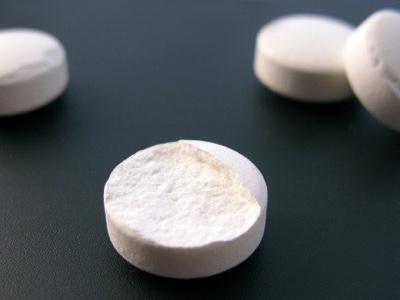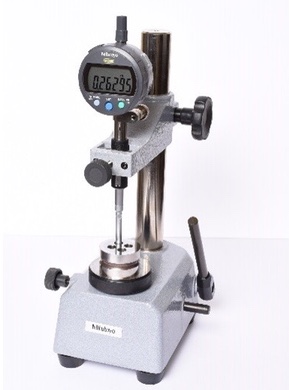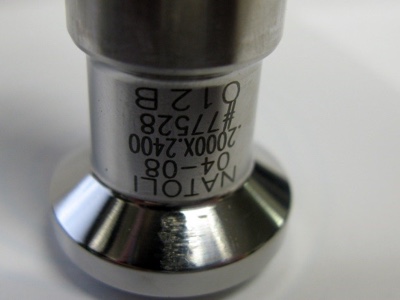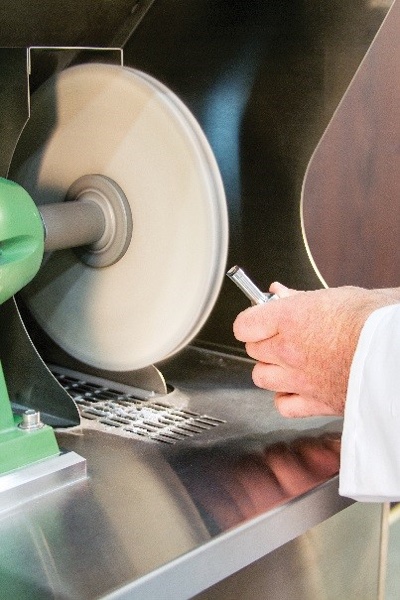Reducing costs while maintaining or increasing output and efficiency has become a common mandate across the tableting industry. Although this directive can seem daunting, one of the easiest and most impactful ways to reduce costs is to create and follow proper maintenance procedures for tablet presses and tablet compression tooling. Not only can you reduce costs, you can increase efficiency and production yields while maintaining tablet quality.
Maintenance procedures should cover proper cleaning and handling, setting up an inspection process, and maintaining your tooling and tablet press.
Maintenance Procedures
Cleaning: implementing a cleaning procedure for tablet tooling is an important but often overlooked first step to cost reduction. Dirty tools can cause tableting and product quality-related problems, including sticking and picking. Keeping tools clean can decrease premature tool wear and allow lubrication to be more effective as well as reduce the possibility of product cross-contamination.
A proper cleaning procedure should reduce human interaction and handling and minimise the potential for tooling damage. Using a cleaning system, such as an ultrasonic wash with an automatic dryer, can ensure that tooling is properly cleaned and dried to avoid moisture and the potential for corrosion.
Proper cleaning of your tablet press is one of the easiest and most effective ways to ensure it operates optimally. Start by vacuuming all excess formulation from the press. Never use compressed air as it will force product into crevices, bearings, and other areas where powder does not belong. Use a noncorrosive cleaner such as 95% isopropyl alcohol, a Steris agent, or even dishwashing detergent to clean your press.
Handling: the use of a transport cart and proper baskets or racks also can decrease the risk of damage to your tooling during cleaning, transportation, and handling (Figure 1 above).
Inspection process: another cost-effective way to extend the life of tooling is to implement a thorough inspection process using equipment that can effectively identify wear.
Then you can make repairs as necessary to further reduce damage and press downtime.

Figure 2: punch tip wear can cause tablet imperfections such as flashing, lamination, and capping

Figure 3: inspecting dies for wear rings can reduce more serious issues
The proper inspection procedure for tooling involves measuring working length for new and in-process tooling and using an instrument, such as an optical comparator, to check the punch tip for wear, which can reduce the chances of tablet imperfections such as flashing, lamination, and capping (Figure 2).
Other inspection systems, such as the Natoli Laser Vision System (LVS) punch inspection device and the Tool Management II (TM-II) system, can help improve product quality and consistency, resulting in a reduction of rejected tablets and wasted product.
By visually inspecting dies for wear or using a handheld gauge to detect wear rings within the die bore, you can reduce the potential for more serious issues. Wear rings can lead to tooling binding in the die, typically caused by material sticking to the die wall.
This condition can cause other damage like worn punch guides, punch-head wear in the case of steel cams, or cam damage when operating with bronze or plastic cams (Figures 3 and 4).

Figure 4: wear rings may lead to punch head wear
Tooling maintenance programme: many factors can reduce tooling's life expectancy, including an abrasive or corrosive formulation, press or turret wear, improper tooling setup on the press, or mishandling by technicians. But by implementing and following a tooling maintenance program, you can repair tooling and save more than 40% on tooling costs.

Figure 5: a trained technician can remove J-hooks on a punch tip
The best method to remove damage, such as J-hooks, and to polish and refurbish punches is to use a benchtop motor with a large unsewn buffing wheel (Figure 5).
You can use a 400-grit stone for restoring land (the flat area around the punch cup) and removing nicks from the punch tip if the wear condition is severe. Restoring land is one of the most important procedures in refurbishing tooling.
Tablet press maintenance: additionally, proper tablet press maintenance is critical to prolonging tooling life. You should regularly inspect tablet press turrets for punch-guide damage, keyway wear and punch alignment issues. Contaminated tooling and tablet press wear are the main cause of failures in production. You should use a protective oil on the tablet press turret after every press cleaning to protect the steel from corrosion.
Tooling options: applying different tooling options also can save money. By using multi-tip tooling, you can reduce labor, the need for additional tablet presses, and other related operating expenses while increasing overall production output. Customers' results have shown that switching from single-tip tooling to six-tip tooling, where applicable, can increase output by more than 500% without incurring additional costs.
Creating and following proper inspection, cleaning, lubrication, handling, and storage procedures provide tooling integrity and ensure the consistent and efficient manufacturing of tablets while prolonging tooling and tablet press life and reducing costs.
Working with vendors you know and trust is another way to trim costs. Buying from less experienced vendors may get you cheaper pricing upfront, but cheap pricing often comes with cheap products and poor service. At Natoli, we pride ourselves on providing extraordinary service and products with exceptional quality.
As procurement and management are in a constant state of budgetary review, it is important to know that you can always take proactive measures to reduce annual spending while consistently producing high-quality tablets.
